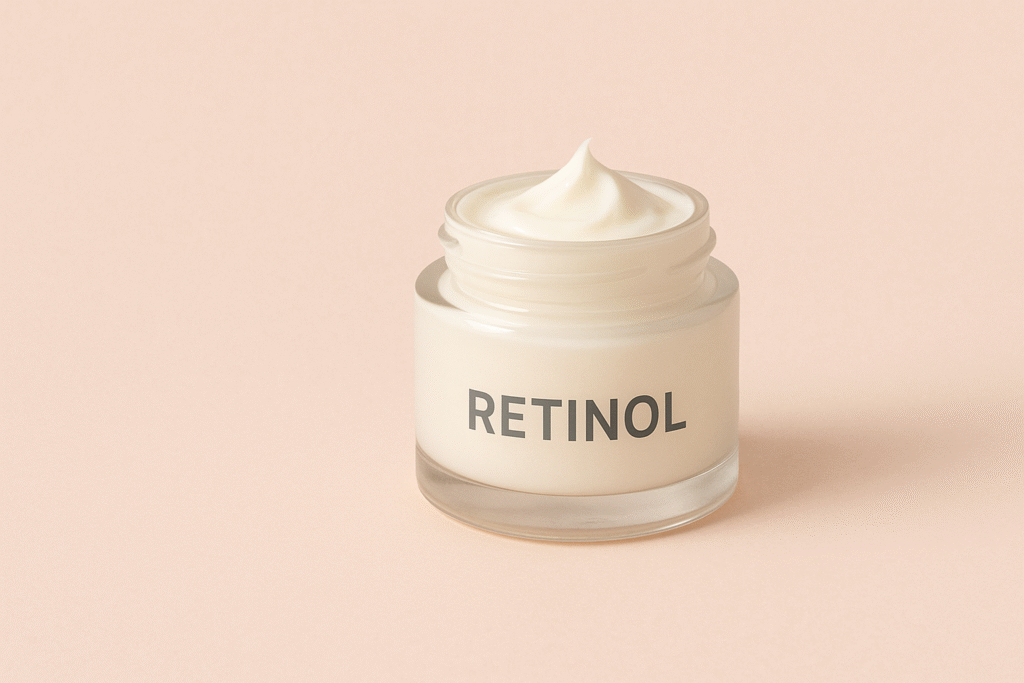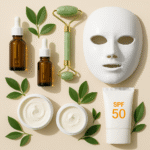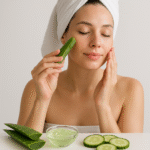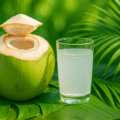Retinol cream is one of the most effective skincare products for improving skin texture, reducing fine lines, and treating acne. By stimulating collagen production and promoting cell turnover, retinol cream helps you achieve radiant and youthful skin when used correctly.
When it comes to skincare, few ingredients are as powerful and widely recommended as retinol. It’s a superstar ingredient that offers a wide range of benefits—from reducing wrinkles and fine lines to clearing acne and evening out skin tone. However, despite its popularity, many people are unsure about how to use it properly or what to expect when they start.
This guide will walk you through everything you need to know about retinol cream, backed by science and expert advice. Whether you’re a skincare beginner or someone looking to fine-tune their routine, this article will give you actionable tips, precautions, and the right mindset to achieve the radiant skin you desire. 💫📖
✅ What is Retinol? Understanding the Science 🔬
Retinol is a derivative of Vitamin A, one of the most essential nutrients for skin health. It belongs to a family of compounds called retinoids, which are known for their ability to promote skin renewal and repair.
How Retinol Works:
- Speeds up cell turnover
Retinol stimulates your skin cells to shed old, dead skin and replace them with fresh, new ones. - Boosts collagen production
Collagen helps keep your skin firm and elastic. Retinol encourages the skin to produce more collagen, reducing fine lines and wrinkles. - Regulates oil production
It balances the skin’s oil levels, making it a great option for acne-prone skin. - Fights inflammation
Retinol calms irritated skin and can help manage redness and sensitivity over time. - Strengthens the skin barrier
It enhances the skin’s protective layer, making it more resilient against environmental damage.
🌟 Who Should Use Retinol Cream?
Retinol is suitable for a variety of skin concerns. Below is a breakdown of who can benefit the most from this ingredient.
| 👤 User Type | 🧴 Benefits | 📋 Considerations |
|---|---|---|
| Aging Skin | Smooths wrinkles, firms skin | Start with lower concentration |
| Acne-Prone Skin | Reduces breakouts and oiliness | Introduce slowly to avoid irritation |
| Uneven Skin Tone | Fades dark spots and scars | Combine with brightening products like Vitamin C |
| Sun-Damaged Skin | Repairs and strengthens barrier | Always pair with sunscreen |
| Dull Skin | Encourages cell turnover | Use moisturizer for hydration |
❌ Who Should Avoid It?
- People with rosacea or eczema unless advised by a doctor
- Pregnant or breastfeeding individuals
- Those using other potent acids (like glycolic acid) without guidance
🌟 Major Benefits of Retinol Cream – In Depth
✨ Anti-Aging
Retinol encourages the skin’s natural repair processes, helping reduce wrinkles, crow’s feet, and fine lines. It also improves elasticity, giving you a more youthful appearance.
🔥 Acne Treatment
By clearing clogged pores and reducing inflammation, retinol helps prevent both active acne and new breakouts from forming.
☀ Sun Damage Repair
It supports the skin’s ability to repair itself from UV exposure, minimizing discoloration, hyperpigmentation, and rough patches.
🌈 Brightening and Tone Correction
With improved cell turnover, dead skin cells are replaced, which leads to smoother skin and a more uniform complexion.
💧 Hydration Balance
While retinol can initially dry out skin, it ultimately helps balance moisture levels when paired with good hydration products like hyaluronic acid.
📆 How to Incorporate Retinol into Your Routine – Complete Schedule
Week 1–2: Introduction Phase
✔ Apply 2 times a week
✔ Use a pea-sized amount
✔ Apply at night after cleansing
✔ Follow with a moisturizer
Week 3–4: Adjustment Phase
✔ Increase to every other night
✔ Observe how your skin reacts
✔ Introduce nourishing ingredients like ceramides
Week 5 onwards: Maintenance Phase
✔ Apply nightly if tolerated
✔ Use alongside antioxidants (like Vitamin C in the morning)
✔ Wear sunscreen every day
🧴 How to Apply Retinol Correctly – Step by Step Guide
- Cleanse with a gentle, hydrating cleanser.
- Dry your face completely before applying retinol.
- Apply a pea-sized amount to your face, avoiding the eye area.
- Wait for a few minutes before applying a moisturizer.
- Use sunscreen every morning—even if you’re staying indoors.
⚙️ Combining Retinol with Other Ingredients
| 🧴 Product | ✅ Works Well | ❌ Avoid Together |
|---|---|---|
| Hyaluronic Acid | Provides hydration | – |
| Niacinamide | Reduces inflammation | – |
| Vitamin C | Brightens skin (morning use) | Avoid same night use |
| Glycolic Acid | Exfoliates | Avoid mixing in one routine |
| Benzoyl Peroxide | Treats acne | Avoid using together to prevent irritation |
🚫 Common Side Effects and How to Cope
| ⚠️ Side Effect | Why It Happens | How to Manage |
|---|---|---|
| 🔴 Redness | Skin adjusting to retinol | Reduce frequency and use calming products |
| ❄️ Dryness | Barrier disruption | Apply moisturizer and hydrating masks |
| 🔥 Burning | Overuse or concentration too strong | Start with lower strength |
| ☀️ Sun Sensitivity | Thinner skin barrier | Use broad-spectrum SPF daily |
🌱 Natural Alternatives to Retinol
If retinol feels too strong or if you’re looking for gentler options, these alternatives might suit you:
| 🌿 Ingredient | ✅ Benefits | 📋 Notes |
|---|---|---|
| Bakuchiol | Retinol-like effects without irritation | Ideal for sensitive skin |
| Vitamin C | Antioxidant, brightening | Use in the morning routine |
| Niacinamide | Strengthens barrier, reduces redness | Can be used daily |
| Peptides | Support collagen production | Gentle for all skin types |
💡 Expert Tips for Success
✔ Always start slow and gradually increase frequency
✔ Hydrate generously to counter dryness
✔ Use SPF 30+ every morning
✔ Pair with calming ingredients if irritation occurs
✔ Never over-apply—less is more!
📌 FAQs – In Depth
Q1: How long will it take to see results?
Most users notice smoother skin and fewer breakouts after 6–8 weeks, while anti-aging effects may take 3–6 months.
Q2: Can I use retinol every day?
Only once your skin adjusts. Start with 2–3 times a week and gradually build up.
Q3: Can I use retinol on sensitive skin?
Yes, but choose lower-strength formulations and apply with extra moisturizing layers.
Q4: Does retinol make the skin peel?
Mild peeling is normal in the first few weeks. It’s a sign that your skin is renewing itself.
Q5: Can I apply makeup after retinol?
Yes, once the product is fully absorbed. However, it’s best to let it sit for 15–20 minutes before applying makeup.
✅ Final Thoughts
Retinol cream is a powerhouse ingredient that can transform your skincare journey—when used thoughtfully. It offers numerous benefits like anti-aging, acne treatment, skin repair, and overall radiance improvement. However, using it correctly is key to preventing irritation and getting the most out of its abilities.
Pair it with hydration, protect your skin from the sun, and introduce it gradually. With patience and care, you’ll be on your way to healthier, clearer, and younger-looking skin. 🌟💧✨
Let your skin shine—because when you feel confident in your skin, it shows! 💖🌞






